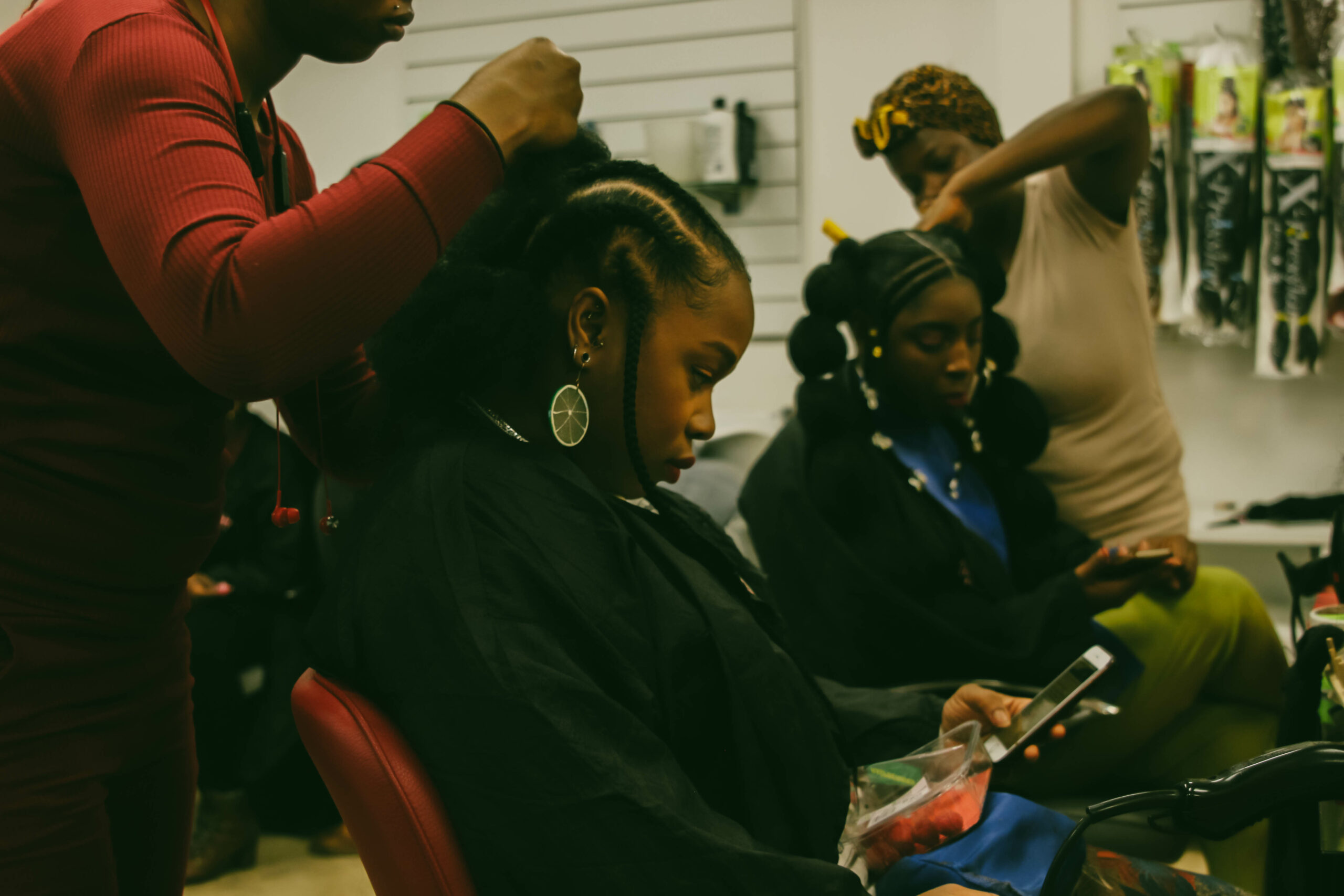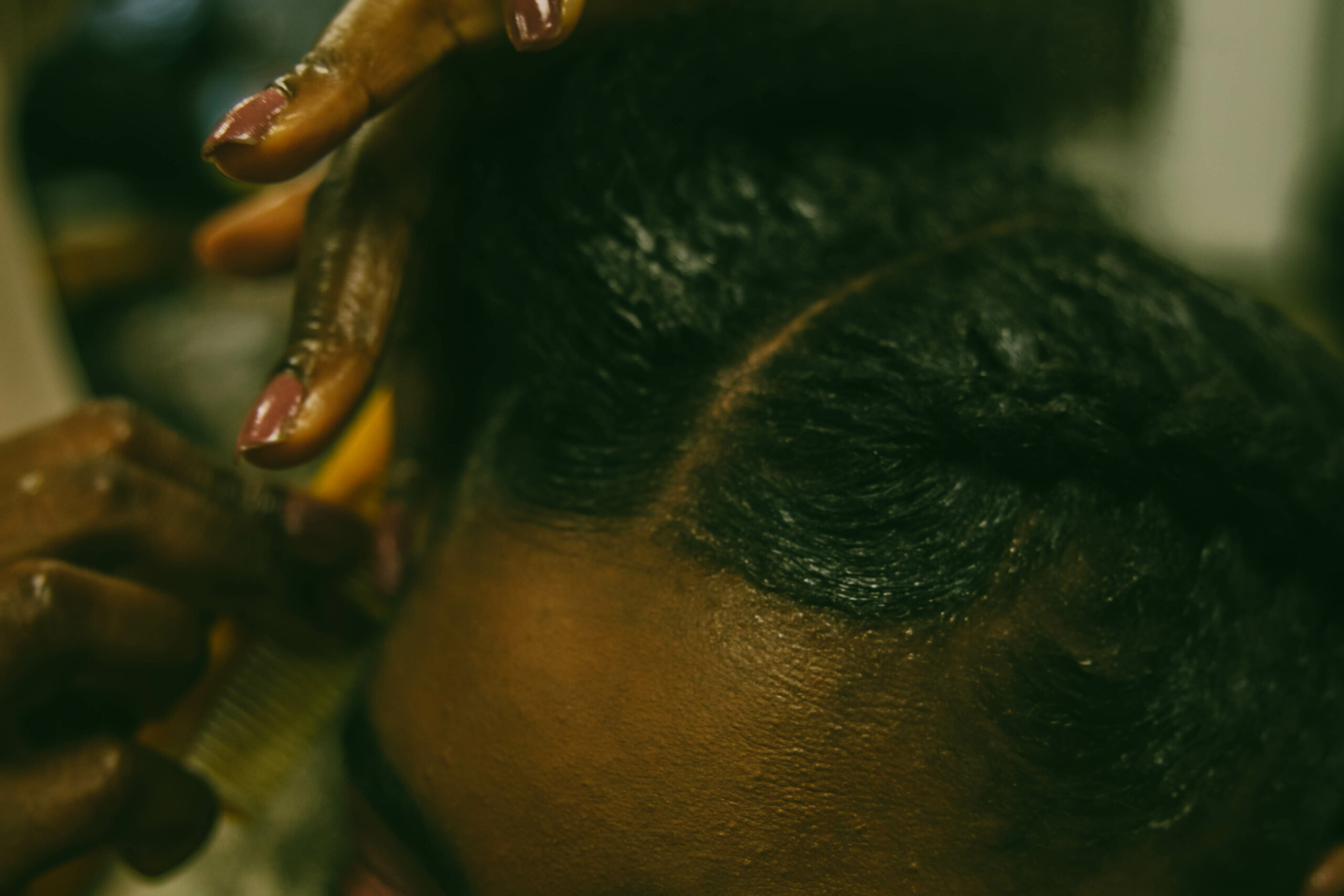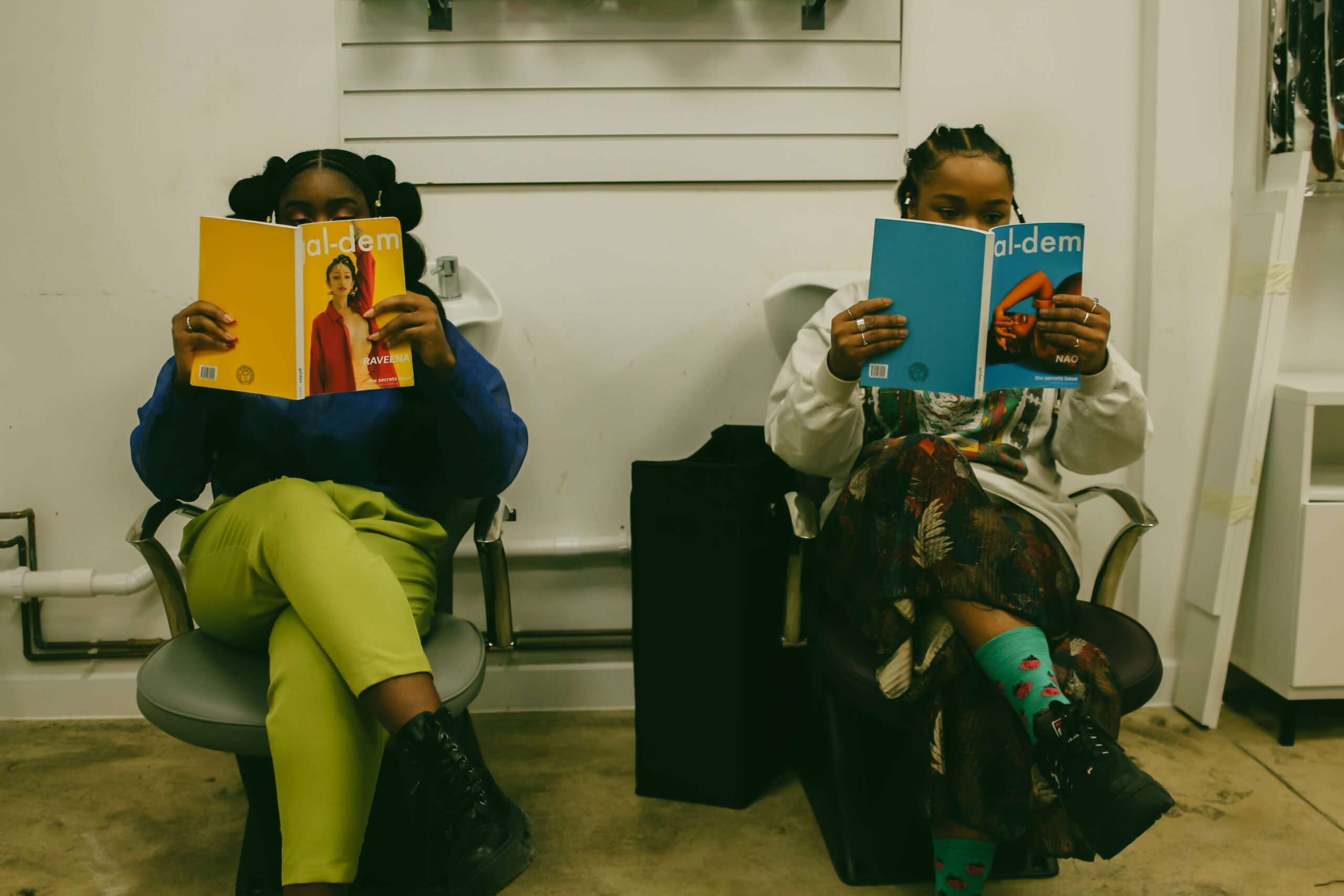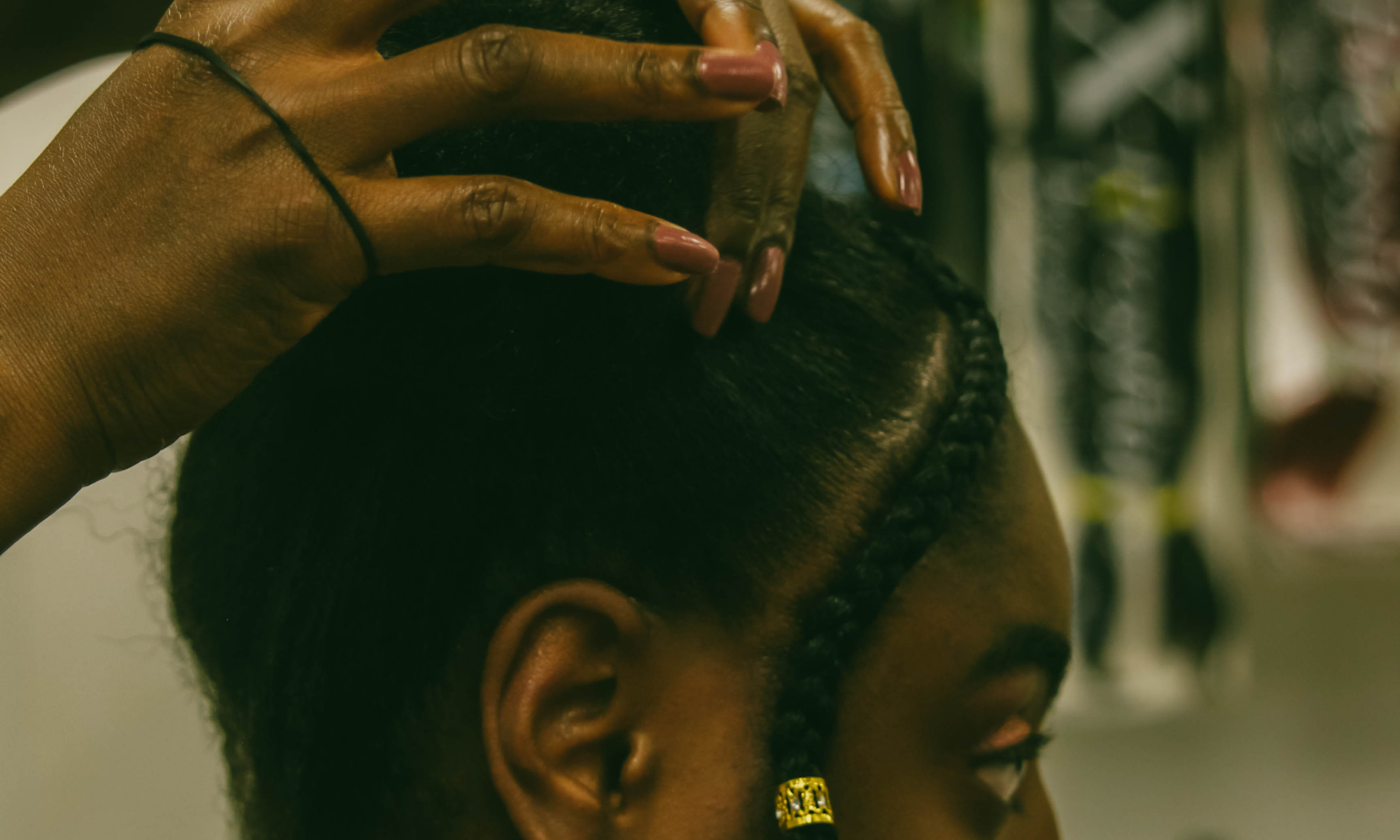To bonnet or not to bonnet: exploring why it’s even a question
From Kaz wearings hers in the Love Island villa to Mo'Nique denouncing public usage, there's a lot of discourse about the satin saviour.
Kemi Alemoru
04 Aug 2021
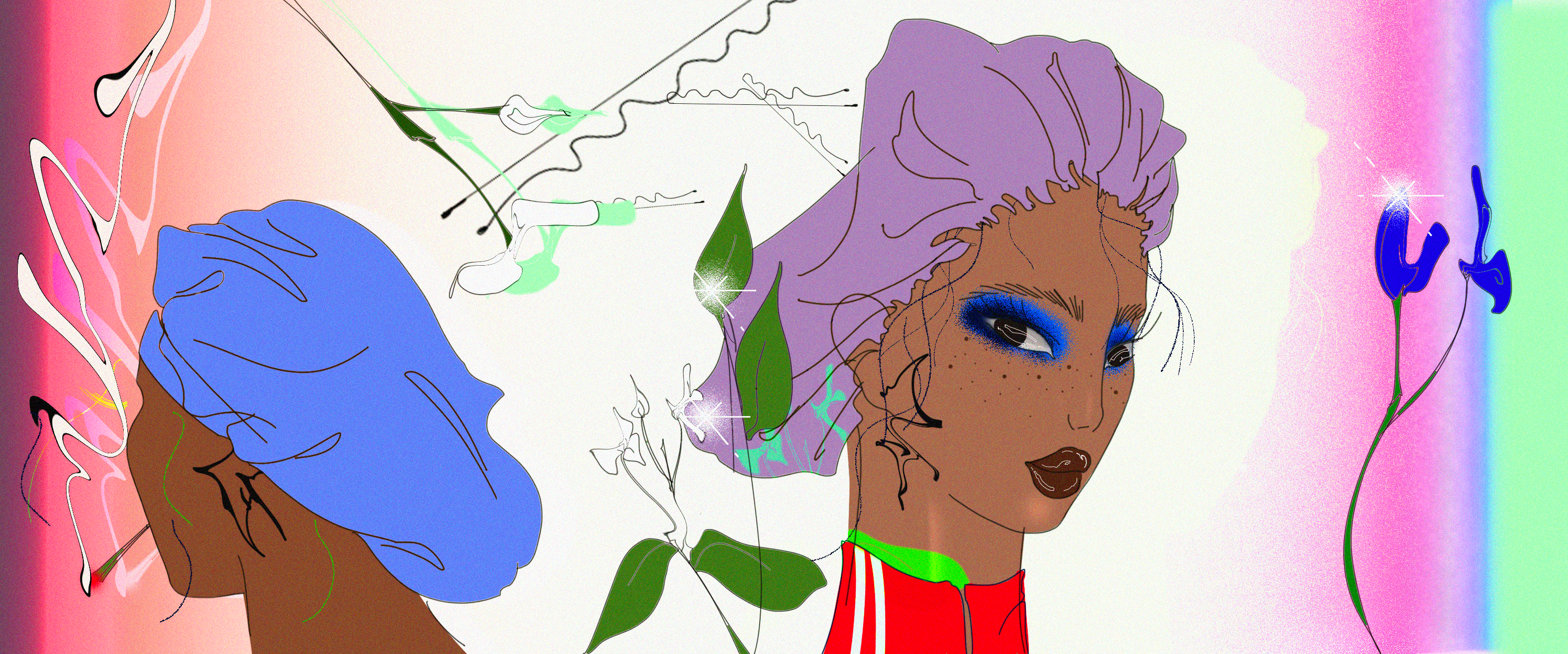
Illustration Maite Marque
There’s a scene from My Wife and Kids that lives deep in the recesses of my brain. Michael and Jay are about to have sex when he pauses and asks Jay to take her kente print headscarf off. She does only to reveal that there is a yellow satin bonnet underneath. “Is this better?” she asks over canned laughter. “Do you want to put it back on?” Michael asks. This is my earliest memory of anti-bonnet propaganda, but over the last couple of months, the satin saviour has caught a surprising amount of attention.
Bonnet visibility feels like it’s at an all-time high. Google trends show that searches for them jumped during March of this year, eclipsing searches for other head coverings like durags. From reducing friction while you sleep to keeping your afro out of your face while you potter around the house this handy hair tool is loved by those with coarser textured manes. You see them as you walk through the streets of London as young black women complete their errands. On Love Island, Kaz seems to have packed quite the collection of them in every colour, which she wears not only at bedtime, but also just chilling around the villa in the day. To which cultural commentator Zeze Millz said in a video to her followers, “Bring that shit in gradually…Let him start liking you before you decide to show him you without the extra trimmings.” Some viral tweets even seemed to blame Kaz’s bad luck with boys in the villa on how she chooses to present herself. One user tweeting under the handle @MisssBeccaWhite wrote: “Kaz if you don’t take off that damn bonnet and shake some cheeks for Medhy imma looose it [sic].”
But there are many bonnet-philes that disagree. For Yewande Adeniran, a PhD researcher and DJ, her nighttime routine is second nature – with or without a guy present. “When the guy that I’m seeing, comes around, I always take off my makeup, do a whole 10-step skincare routine, put on my headscarf, and then my bonnet, and hadn’t even thought about it,” she says. “A lot of the internalised racism I had growing up was from black men [around me] that would say that we’re high maintenance. I guess all these different things feed into you feeling different,” adds the 27-year-old. “I wear my bonnet from day one when I’m dating and that includes in sexy contexts as well,” says Nali Simukulwa over a series of Whatsapp voice notes. The writer, who is based in the north of England, is shocked at the amount of mileage the debate has gained in the last couple of months. “However, I’d be less likely to tie my hair up in a headscarf when seeing someone new. A bonnet is the cutest option.”
Nali’s perspective contradicts Zeze’s theory that black women who disagreed with her were “lying” about their habits. She adds that if you’re trying to “bone” a new man you’re definitely “not whipping off your wig off and putting on a bonnet”. But differing opinions in the bonnet discourse could also come down to dating partner demographics. Yewande’s past white partners would sometimes ask about it and she would explain she wears it to curb friction, but her current boyfriend who is white was familiar with bonnets through some Tik Toks he had watched. Similarly, others interviewed who dated women and non-binary individuals said these partners barely paid any attention to their nighttime headwear.
“You’re already violating social norms in a [queer relationship], putting on a bonnet is not the most transgressive part,” laughs Udoka, 24, who describes herself as a creative. “Whenever there’s a conversation like ‘will you let your man see you like this?’ I’m just thinking ‘I don’t even go there.’” Similarly, 19-year-old Nali says between young women, “there’s a mutual understanding of the things you have to do to get certain results aesthetically”. From her experience in same-sex relationships, partners reminding her to bring a bonnet when staying over or even purchasing one for her has been a demonstration of understanding and care. Due to the fragility of Nali’s own hair, it’s not a question of whether or not to cover her hair for bed – the alternative is expensive, damaging and not an option. “Some of you might want to make it seem like you roll out of bed, but that’s not me, that’s not my portion,” she explains.
The debate over simple head garments designed to protect afros seems to lie in the general policing of black women’s appearances. Particularly when it comes to the wearing of them on Zoom meetings being considered unprofessional. “There’s a lot of misogynoir around whatever black women do anyway so whether it’s fancy or it’s ghetto, just do what you want. People will be judging you regardless,” Udoka adds. Yewande agrees. “My mum hates it when I leave the house with a bonnet on because she says white people will look at me, but they look at me anyway,” she laughs.
“Some of you might want to make it seem like you roll out of bed, but that’s not me, that’s not my portion”
Across the pond, public bonnet wearing came under fire. A post uploaded on 29 May by outspoken Oscar-winner Mo’Nique (of Precious and The Parkers fame) ignited the flame. “I saw so many of our young sisters in head bonnets, scarves, slippers, pyjamas, blankets wrapped around them and this is how they’re showing up to the airport,” said the actress with a concerned look on her face and in the cadence of a pastor. “The question to you, my sweet babies, is when did we lose pride in representing ourselves?” Tiffany Haddish weighed in in agreement, saying “we got to have some dignity” in ourselves, this is just two years after she showed up at the Met Gala with a zippie bag of fried chicken inside her purse. But OK.
A lot of the debate around how black women present themselves, both with and without bonnets, is coming from other black women. Udoka says this is down to the internalised shame we’re taught to have around our own bodies, and around wearing wigs and extensions or having hair that is “different”. “What if we centred our own feelings of beauty and comfort as we move through the world? It’s liberating to change how you react when someone derides or misunderstands something like this, to push that shame back to them. It’s very powerful.”
Nali, who is based in Liverpool, says this is similar to old debates around whether it’s respectable for Scouse women to walk around with rollers in their hair before a night out. “But people have come to see it as part of a routine for hair maintenance and this is quite similar,” she says. In her opinion, the more we free the bonnet, the more we free ourselves. “I was watching [Kaz on Love Island] with my white friend and her mum, and they were curious to learn more about black culture and black hair. It was just a normal lighthearted conversation that wasn’t politicised as black hair often is,” she says.
The more bonnets see the light of day, the more people may realise they need them. And just as durags eventually made their way into the fashion vernacular, so might bonnets. It’s already happened to Wiz Khalifa who decided to wear one to keep the locs out of his face. “I see why chiccs [sic] dig em so much,” he added, later posting a picture of himself wearing one with a blunt hanging out of his mouth. Perhaps like the anti-bonnet propaganda of yore – like the scene on My Wife and Kids – that may have shaped views to disparage the look, 2021’s bonnet-heavy media may be about to boost its profile. Next, we may become accustomed to seeing bonnets on the runway, on the cover of magazines, and yes even… in sexy contexts.






